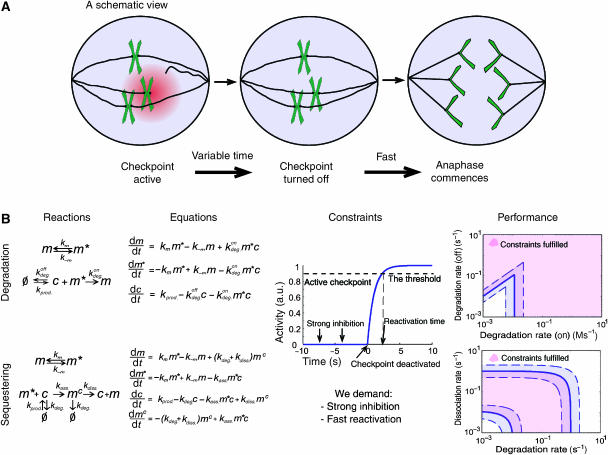Figure 1.
‘The spindle assembly checkpoint'. (A) A scheme of the checkpoint: as long as even a single kinetochore is not properly attached to the mitotic spindles, anaphase does not commence. The ‘stop-anaphase' signal is generated at the unattached kinetochores. Once all kinetochores are attached, anaphase initiation is rapid. (B) Two models for Cdc20 inhibition: Cdc20 can be inhibited either by enhanced degradation or by sequestering. Cdc20 and the inactive and active complexes are denoted as ‘c', ‘m' and ‘m*' respectively. The models were solved and analyzed with respect to their ability to tightly inhibit Cdc20 (quantified by the ‘amplification' ratio), and to activate rapidly the system once the last kinetochore is attached (reactivation). Both models were found to fulfill the requirements for a broad range of parameters (right most panel). Solid lines represent the borders for a solution where the amplification (ρ) is 100 and the reactivation time (τ) is 200 s. Dashed lines represent an increase or decrease of these restraints by a factor of 2. Parameter used: mtotal=10 and kass.=kdeg.on=10 M s−1.

